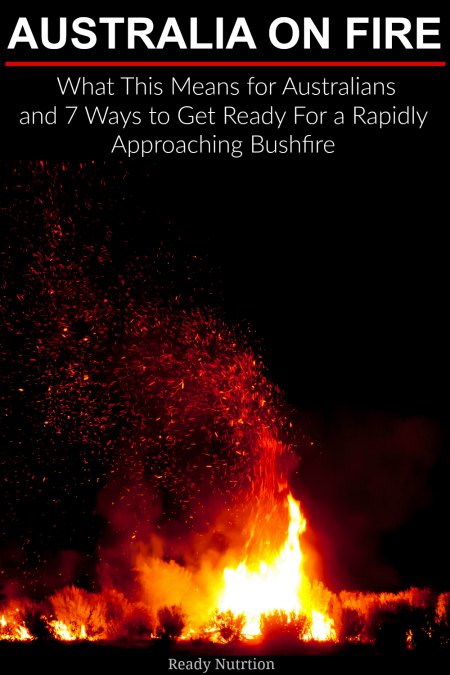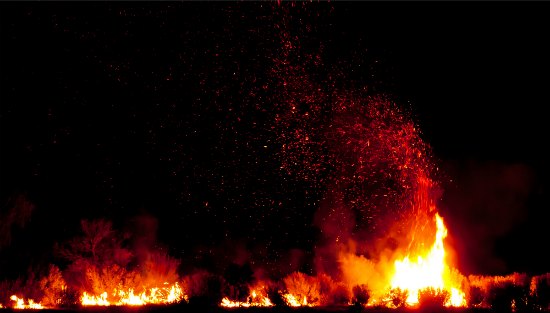Bushfires have been burning across Australia for months, scorching homes and destroying entire towns. Nearly 18 million acres of land have been burned, most of it bushland, forests, and national parks, which are home to the country’s native wildlife, according to a report by CNN.
A State of Disaster has been declared in Victoria ahead of a weekend of alarming fire danger, as another death in the state is confirmed and 17 are still missing. This danger could eventually prompt forced evacuations from fire-stricken areas, as emergency crews battle deadly blazes and brace for a dangerous weekend ahead.
Additionally, nearly half a billion animals have been affected by the fires in NSW alone and millions of them are already potentially dead, according to ecologists at the University of Sydney. Birds, reptiles, and mammals (with the exception of bats), are among those affected. Insects and frogs are not included in that number either.
To make matters worse, the bushfires are literally changing the weather patterns. “The bushfires are horrendous, but we can expect cyclones, floods, and heatwaves too,” according to ABC News Australia.
In short, these bushfires are devastating and destroying entire ecosystems and towns as the blaze in a scourge across Australia. People have been detailing the harrowing ordeal on social media:
????????????????
Now when I go to an Australian forest, I hear no animals.
But when I go to bed at night, I hear their screams.#AustraliaFires #AustraliaBurning #AustralianFires #AustralianBushfire #AustraliaOnFire #australiafire #bushfirecrisis #bushfiresAustralia #ClimateChange pic.twitter.com/6PdlUPOxQb— Evey Hammond ???????????????? Climate Justice Now (@EveyHammond19) January 5, 2020
I used to think end of the world preppers were crazy. The more this government mismanages this country the more I find I have to apologise to those people for their foresight. Anyone know a reputable bunker manufacturer in Australia?
— Joe Kano (@JoeKanoAus) December 18, 2019
Posted by PREPare Australia. on Friday, January 18, 2013
As many of you may have heard by now, Australia is facing one of the most severe natural disasters in history. These…
Posted by Kerwin Rae on Wednesday, January 1, 2020
https://www.facebook.com/reg.malhotra.54/posts/10157060562673277
Don’t leave it up to chance. If you have any chance that you could face something this horrifying, it’s better to prepare in advance. After all, as Tess Pennington says in her book The Prepper’s Blueprint: The Step-By-Step Guide To Help You Through Any Disaster, “If we have learned one thing studying the history of disasters, it is this: those who are prepared have a better chance at survival than those who are not.”
7 Ways to Prepare for a Rapidly Approaching Bushfire
In a previous article we highlighted some tips that may help those in their evacuation preparations:
Let’s go over a few things that you can do to give you and your family a better chance.
- Evacuate when necessary: This means clear out while you have the chance. Sound advice. Discretion is the better part of valor. Typically, firemen give a home 10 minutes to evacuate. If they are warning you to leave, then heed the warning and grab what you can, and leave, plain and simple. You can replace your house and anything you may own in it.
- Have a plan: Planning is key. Know where you’re going to go, the route to get there, and take into consideration days of travel and impediments in the form of blocked roads, shifting weather conditions, and crowds of people.
- Have all of your supplies ready to load up and to go: Your basics of bullets, beans, and band-aids…food, water, medical supplies, and the ability to defend all of it. Don’t waste time when the order comes down: be ready to load up and go. Here is an evacuation checklist of suggested items.
- PACE: Acronym in the military for “Primary, Alternate, Emergency, Contingency.” Have your Primary plan in place. Have an Alternate plan (with an alternate route, etc.,) in place, should something come along to disrupt the Primary plan. Emergency – this covers specific actions to take if something arises. For example, if one of your family members with a medical condition takes ill, are you going to hunker down and treat them for short-term treatment, or continue to roll, converting the travel trailer to a “field hospital” on wheels? Contingency – to include “what if’s” and things that may arise…scenarios you’ll have to “game,” and what you’ll do to work through them.
- Fire extinguishers and protective gear: Get a couple that are A-B-C rated, that will work on grease, oil, electrical fires, and wood fires. Pick up some fire suits to protect you if you have to be exposed to enable you to get through a blaze in your immediate area. Pick up burn cream and first-aid supplies such as silver sulfadiazine and some oxygen respirators. Many emergency first aid and fire supplies can be ordered online at amazon.com, to be delivered to your door.
- A good radio with National Weather info – This will be worth its weight in gold when the time arises. You should have one anyway, but especially in fire season, as it will be updated to let you know where the areas of high risk are located, as well as possible shelters if you are on the move and need them.
- Talk with your local firemen: No, really. These guys and gals will give you the “up and skinny” on what is going on for your area. They may even provide sagacious (that’s “sage” in the vernacular) advice that you may not find anywhere else…info they’re privy to outside of the channels of the regular public.
Information is your most valuable tool in this regard, however, keep this in mind: information itself is not the entire solution. Acting in a timely fashion and using the expertise of others at the right time is just as important as the information itself. Proper planning will increase your probability of success. The planning is in your hands. Use the Internet and your community resources to keep tabs on these wildfires so that you can take action in the event that they should threaten you and your community.
The Step-By-Step Guide To Help You Through Any Disaster

This article was originally published at Ready Nutrition™ on January 10th, 2020








We dont have a National weather radio service in Australia, tune to yr local ABC radio with a battery/solar/wind up powered radio.
Have alternative methods of comms. Most RFS units have a UHF CB radio in their trucks. Talk to yr local RFS captain and find out.
In fires such as these, a handheld fire extinguisher is next to useless, get some fire hoses, a decent honda firefighter pump/tank etc for the back of yr ute/trailer etc. You will be surprised how much u can save using an 1,000 litre IBC container and pump sitting on a trailer.
Fire suits are useless here, its too hot.
Join yr local RFS brigade and get the experience and confidence to stand yr ground. U will need at least two fit people and suitable gear to protect yr property.
Have yr backup/withdrawal plan, say into the dam etc if it all turns to manure.
All bets are off with a 100km/hr wind.
Remember that there arnt enough fire trucks to have one coming down yr driveway as the fire comes at u.
If u arnt sure, get out-early.